Mobile app development can be a daunting task, especially for those without a technical background. Navigating through the maze of coding, design elements, user experience, and launch strategies may seem overwhelming. This is where non-technical mobile app guidance becomes invaluable. Our goal is to simplify this complex process and provide you with the essential knowledge needed to bring your app idea to life.
Whether you are an entrepreneur looking to venture into the mobile app market or a business professional seeking to enhance your company’s digital presence, understanding the basics of mobile app development is crucial. From conceptualization to deployment, each step requires careful planning and execution. This guide aims to demystify these processes and offer practical advice tailored for non-technical individuals.
By breaking down technical jargon and focusing on the core elements of app development, we help you make informed decisions. Topics such as market research, user acquisition strategies, and app analytics are covered in a straightforward manner, ensuring you grasp the essentials without feeling overwhelmed.
Let us be your guide through this journey. Book A Consultation Now! and take the first step towards turning your app idea into reality.
Understanding Mobile App Basics

Before diving into the intricacies of mobile app development, it is essential to grasp the basics of mobile apps. At its core, a mobile app is a software application designed specifically to run on mobile devices such as smartphones and tablets. These apps can be categorized into three main types: native, web-based, and hybrid.
1. Native Apps: These are developed for a specific platform, such as iOS or Android, using platform-specific programming languages like Swift for iOS and Kotlin for Android. Native apps offer the best performance and user experience but require separate development efforts for each platform.
2. Web-Based Apps: These are essentially websites that function like mobile apps. They are built using standard web technologies such as HTML, CSS, and JavaScript. While they are easier to develop and maintain, they may not offer the same level of performance and user experience as native apps.
3. Hybrid Apps: Combining elements of both native and web-based apps, hybrid apps are built using web technologies but are encapsulated within a native app shell. This allows them to be distributed through app stores while still being easier to develop and maintain across multiple platforms.
Understanding these basic types of mobile apps is the first step in deciding which approach best suits your needs. Each type has its own set of advantages and challenges, and the choice will depend on factors such as budget, timeline, and desired user experience.
Choosing the Right Development Approach
Once you have a basic understanding of mobile app types, the next crucial step is choosing the right development approach. This decision will significantly impact your project’s timeline, budget, and overall success. Here, we explore three primary approaches: native, cross-platform, and low-code/no-code development.
Native Development: As previously mentioned, native development involves creating separate apps for each platform (iOS and Android) using platform-specific languages. This approach is ideal if you need high performance, access to device-specific features, and a superior user experience. However, it requires more time and resources since you’ll need separate development teams for each platform.
Cross-Platform Development: This approach allows you to write a single codebase that can run on multiple platforms. Technologies like React Native and Flutter are popular choices for cross-platform development. This method can save time and reduce costs, but there’s often a trade-off in terms of performance and access to certain native features.
Low-Code/No-Code Development: For those with limited technical expertise or budget constraints, low-code/no-code platforms like Appgyver, Adalo, and Bubble offer a viable solution. These platforms provide drag-and-drop interfaces, making it easier to build functional apps without extensive coding knowledge. While these tools are convenient, they may not be suitable for highly complex or resource-intensive applications.
In conclusion, the choice of development approach should align with your project goals, budget, and technical requirements. Carefully weigh the pros and cons of each option to make an informed decision that will set your app up for success.
Designing User-Friendly Interfaces

After settling on the right development approach, the next priority is designing user-friendly interfaces. A well-designed interface can make or break your app’s success, as it directly impacts user satisfaction and engagement. Here are some key principles to keep in mind:
Simplicity: Aim for a clean, uncluttered design. Avoid overwhelming users with too many features or complex navigation. The goal is to make the user experience as intuitive and straightforward as possible.
Consistency: Consistency in design elements such as buttons, fonts, and colors helps users familiarize themselves with the app quickly. Ensure that these elements are uniform across all screens and functionalities.
Accessibility: Design with accessibility in mind to ensure that your app can be used by people of all abilities. Use high-contrast colors, readable fonts, and provide alternative text for images. Consider implementing voice commands and other assistive technologies.
Feedback: Incorporate feedback mechanisms to guide users through their interactions. This can include visual indicators like loading icons, confirmation messages, and error alerts. Feedback helps users understand the results of their actions, reducing confusion and frustration.
Usability Testing: Conduct usability testing with real users to identify potential issues before the app goes live. Gather feedback and make necessary adjustments to improve the user experience. This step is crucial for catching overlooked problems and refining the interface.
By focusing on these principles, you can create interfaces that are not only visually appealing but also functional and user-friendly. A well-designed interface enhances user satisfaction, encourages engagement, and ultimately contributes to the overall success of your mobile app.
Effective Marketing and Launch Strategies

Once your app’s interface is polished and user-friendly, it’s time to focus on effective marketing and launch strategies. These strategies ensure your app reaches the right audience and gains the traction it needs for success. Here are some crucial steps:
Pre-Launch Buzz: Begin generating excitement before the official launch. Use social media, blogs, and email newsletters to create anticipation. Share sneak peeks, development stories, and behind-the-scenes content to engage potential users.
App Store Optimization (ASO): Optimize your app store listing to improve visibility. Use relevant keywords in your app title and description, and include high-quality screenshots and videos. Positive reviews and ratings can also boost your app’s ranking.
Influencer Collaborations: Partner with influencers in your app’s niche to reach a wider audience. Influencers can provide authentic reviews and endorsements, helping to build credibility and attract users.
Press Releases and Media Outreach: Write compelling press releases about your app’s launch and reach out to tech bloggers, journalists, and media outlets. Coverage from reputable sources can significantly increase your app’s visibility.
Launch Event: Consider hosting a launch event, either virtually or in-person. This can be an excellent opportunity to showcase your app, engage with potential users, and generate media coverage.
Social Media Campaigns: Utilize various social media platforms to run targeted ad campaigns. Engage with your audience by responding to comments, sharing user-generated content, and keeping your followers updated with new features and improvements.
Post-Launch Analysis: After the launch, monitor your app’s performance using analytics tools. Track downloads, user engagement, and feedback to identify areas for improvement. Continuous optimization is key to maintaining and growing your user base.
By implementing these marketing and launch strategies, you can ensure that your app not only reaches its target audience but also builds a strong user base from the outset. Effective marketing is crucial for standing out in a crowded app marketplace and achieving long-term success.
Continuous Improvement and User Feedback

After your app has launched, the journey doesn’t end there. Continuous improvement and user feedback are essential to keeping your app relevant and successful. Here’s how to approach this phase:
User Reviews and Ratings: Regularly monitor and respond to user reviews on app stores. Addressing concerns and thanking users for positive feedback can foster a loyal community and improve your app’s reputation.
In-App Feedback Mechanisms: Implement features within your app that allow users to provide feedback directly. This can include surveys, feedback forms, or even simple rating prompts. Direct feedback is invaluable for understanding user needs and preferences.
Analytics and Performance Monitoring: Use analytics tools to track user behavior and app performance. Key metrics such as session length, retention rates, and user demographics can provide insights into how users interact with your app and where improvements are needed.
Regular Updates and Bug Fixes: Consistently update your app to fix bugs, improve performance, and introduce new features. Regular updates show users that you are committed to maintaining and enhancing their experience.
Community Engagement: Engage with your user community through social media, forums, and other platforms. Listening to your users and involving them in the development process can lead to more tailored and effective updates.
Competitive Analysis: Keep an eye on competitors and industry trends. Understanding what other apps in your niche are doing can provide inspiration and highlight areas where you can differentiate and innovate.
By prioritizing continuous improvement and actively seeking user feedback, you can ensure your app remains competitive and meets the evolving needs of your users. This ongoing process is crucial for long-term success and user satisfaction.
Ready to take your app to the next level? Book A Consultation Now!
